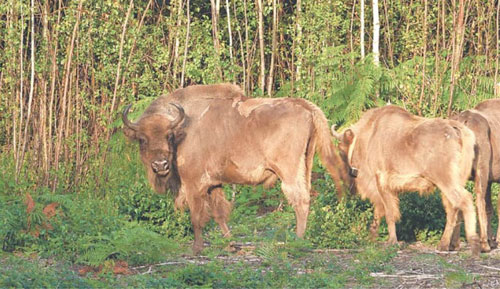As the sun rose on Tuesday over southeast England, three bison emerged from a corral into a new wood-land home as part of an ambitious project to trans-form the natural environment.
The trio immediately began munching birch tree leaves in the ancient woods near Canterbury, to restore and manage the area with their behaviour — and minimal human interference.
It marks the first time in millennia that European bison — the continent’s largest land mammal and the closest living relative to ancient steppe bison that once roamed Britain — will live in wild conditions once again.
“(It’s a) really momentous occasion today,” Mark Habben, of the Wildwood Trust which is leading the five-year conservation project, said.
“It couldn’t have gone any better… they took a glance back, looked at us and then disappeared into the woodlands,” he added, moments after the release.
The female bison — one matriarch and two younger cows — will now graze, eat bark, fell trees and take so-called dust baths, churning up the ground in the woods.
This creates a multitude of benefits, helping other species forge habitats as the bison become the perfect “ecosystem engineers”.
“We’re doing this to restore the environment and restore a native English woodland and everything that thrives in and around that kind of habitat,” explained Habben, saying it was “critically important”.—AFP










